Nine Common Firefighting Hand Tools
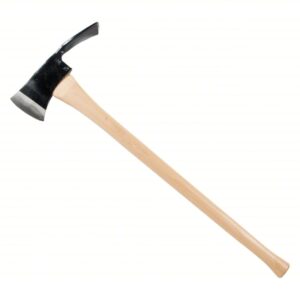
Pulaski – The workhorse. The quintessential piece of firefighting equipment. With an axe on one side, and an adze (or hoe) on the other, it’s able to hack down trees and scrape line. Because of its versatility, it’s the standard tool for smokejumpers. It just does everything really well. Named after its inventor, Ed Pulaski, it’s been an integral weapon in the firefighting arsenal since the 1930s.
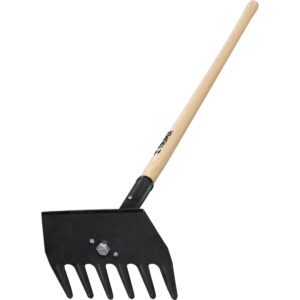
McLeod - Picture a normal leaf rake. Now imagine that its tines have been reduced from 15 to 6, their widths tripled, and their length cut back almost 75%. Oh, and it’s been bent at a 90 degree. One more thing - it has a sharp edge on its back side for chopping roots. This bastardized rake is what we in the fire community call a McLeod. While not the most common of tools, it is great at cutting through duff, though not as effective as a rhino or a pulaski at moving dirt. The sharp edge, however, can be a highly-effective tool for removing roots.
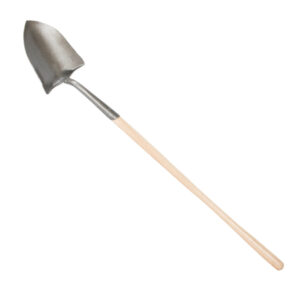
Shovel - ‘Nuff said. The secret is in keeping the edges sharp. It’s amazing how easily a sharp tool can cut through duff in skilled hands. It is the universal tool of Hotshot Superintendents and Fire Engine Captains. It’s not the most effective tool for line cutting, but once you get the swing down, you can get rip some mean line with it. Its most practical benefit is being able to scoop dirt and sling it onto a hotspot. For that purpose - it’s excellent.
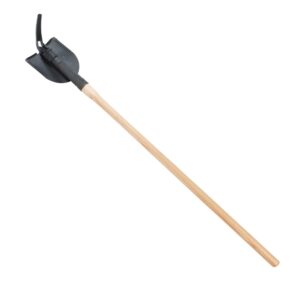
Combi Tool - This thing is the worst. I hope it's not still around, but it probably is. This site is supposed to be unbiased. But I just can't bring myself to say something positive about this thing. First off, it just looks lame. If Nickelback fought fires, they would all be carrying combi tools on the line. If Guy Fieri was a wildland firefighter, he would be hacking line with a flame-striped combi tool. Alright, that last sentence was a cheap shot. Say what you want about the guy's style, Guy Fieri is a good human being. After the Tubbs Fire of 2017 ravaged his hometown of Santa Rosa, CA, Guy pitched in to cook meals for the community. But back to the combi tool. It just doesn't do any one thing went well. It's called the combi tool because its a combination of a hoe and a pick. But you just can't move serious dirt with it. The hoe lacks sufficient surface area to get a good lick in, and the pick attachment, well, if you find yourself tumbling down a hillside, and need to self-arrest, sure, maybe that thing would come in handy. But that's literally the only good use for it.
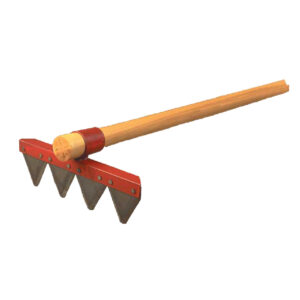
Fire Rake - We didn't see many of these on the firelines in California, but they're commonly used in the decidious forests of the Southeast. They're most effective in areas where there's heavy concentrations of leaf litter. So if you're fighting fire in Kentucky or Tennessee etc., you could expect to see these on the line.
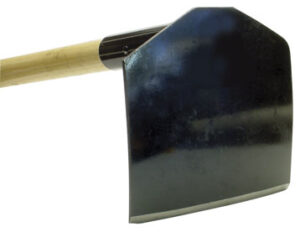
Rhino - This tool is often just a shovel blade bent midway at a 90 degree angle with it's tip squared off. The result is a lightweight, effective piece of line cutting equipment. It can cut roots, but not as effectively as a pulaski or a McLeod. It’s greatest contribution is moving dirt, and it is common to see 2 or 3 rhinos follow behind the lead pulaski in a standard hotshot crew’s tool order.
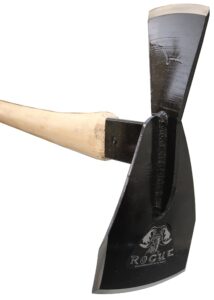
Pig – A Pulaski on steroids. In order to wield the Pig for an all-day line cut, I sometimes felt like I needed some steroid assistance myself to make it through a shift! The pig is produced by welding on a piece of additional metal to the hoe end of a pulaski. This increases the surface area of the hoe, and allows for larger chunks of line to be scraped per swing. It also adds significant weight to the head, which increases the force that can be applied while swinging the ax. Besides the added weight, one of the other downfalls is that the larger hoe does introduce some stability issues and throws the natural balance of the tool off. But with practice, you get the hang of it. If nothing else, it just looks like a mean mother. And you feel like a boss toting it around the fireline.
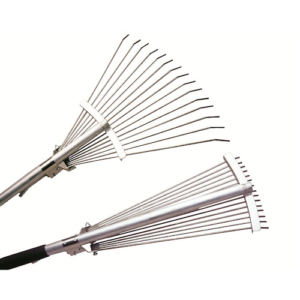
Monkey Paw – These tiny little hand rakes are easily stored in a pack and can be quickly taken out to sweep a line clear of loose leaf litter and needles. They’re usually carried by the last person in tool order, the person who is responsible for ensuring the quality of the fireline (e.g. a squad boss).
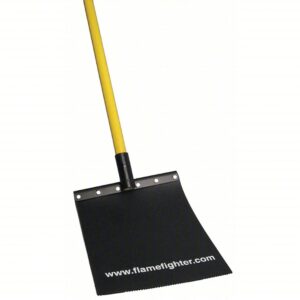
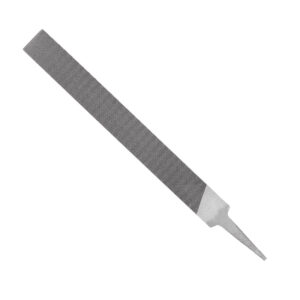
Fire Flapper - Ridiculously effective. You literally just beat the fire into submission with this thing. Great for tamping out fires in light fuels like grass. A common sight in the hands of firefighters working fires in the plain states like Kansas and Oklahoma.
Bastard File - While not technically a firefighting tool - these files are what keeps the tools in service. Having a sharp edge on a tool is what allows firefighters to cut line for days. Every firefighter carries one of these bad larry's in their line gear. This simple file turns a beat-up shovel into a weapon of mass vegetation destruction. Simple yet effective in the hands of someone who knows how to use one.
Tool Sharpening 101
"Give me six hours to cut down a tree, and I will spend the first four sharpening the axe." ~ Abraham Lincoln (but probably someone else)
My mind was blown when I learned that you could sharpen hand tools. The first time you stick a sharpened shovel into the ground, you will amazed at how little effort it took. Then, you’ll be reminded of all those hours spent as a kid helping your parents out with yard work with rusty, dull tools, and you’ll be overcome by an intense urge to travel back in time with one of these amazing shovels. Sharpening is an art form. And it takes time to get good at it. All firefighters will carry a bastard file like the one pictured below in their line gear. Whenever there's downtime, you'll notice the veterans taking the time to put a few licks on the edge of their tool. Keeping your tool sharp saves energy. And that's something you need to conserve. My advice - take sharpening seriously. Do it religiously. You’ll be a happy firefighter if you do.